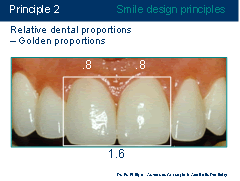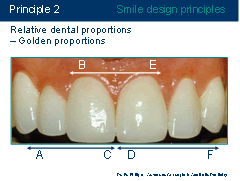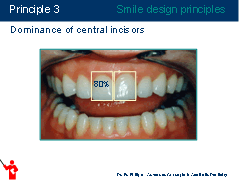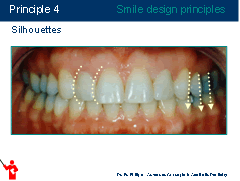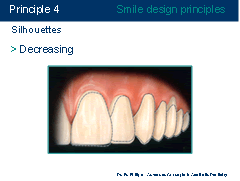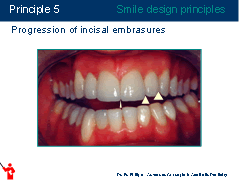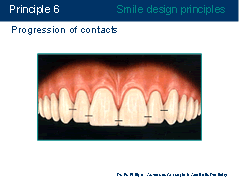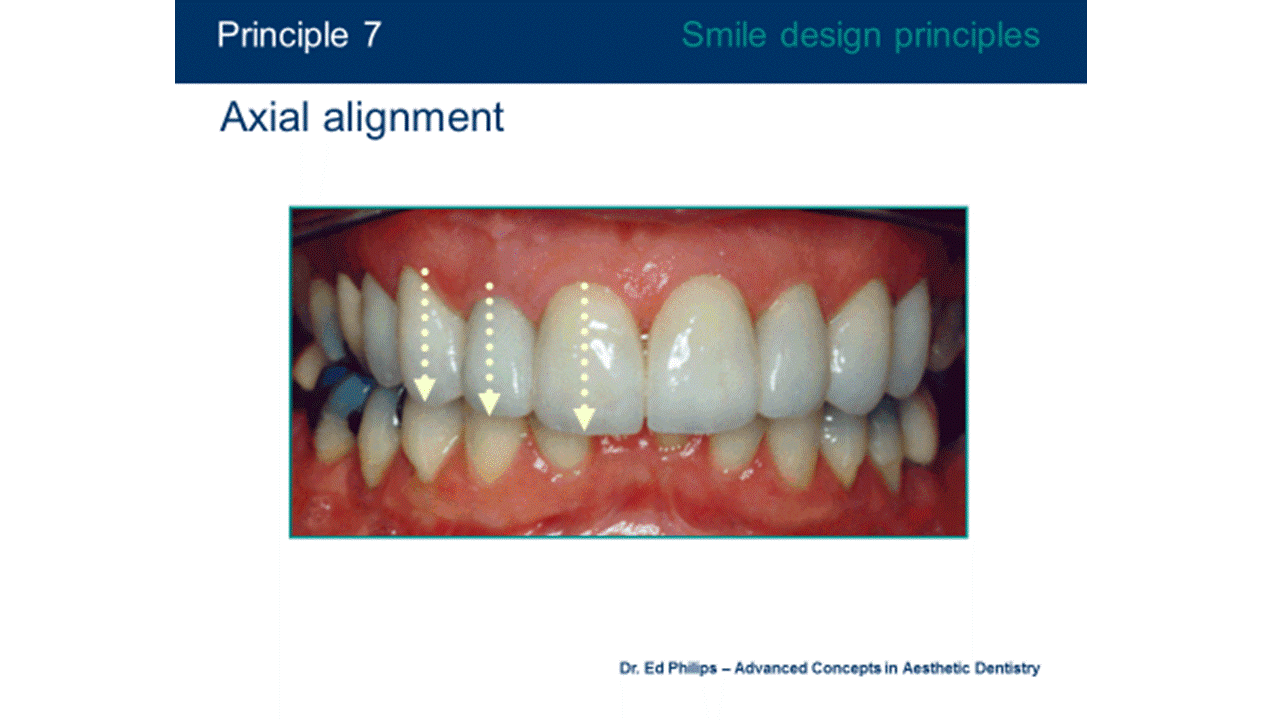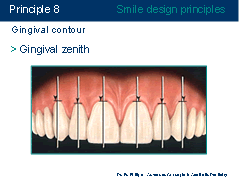
Smile Principles
Artistic and Scientific Principles of Smile Design in Cosmetic Dentistry
1. The Smile Line
The first aspect of a patient’s smile that we look at is the smile line. The smile line is essentially the smile pattern. While there are as many different smiles as there are people, they can generally be classified as one of three basic smile patterns: the Commissure smile, the Cuspid smile, or the Complex smile.
The patient is graded on whether their smile line is right for their particular smile pattern. The teeth should mirror the smile pattern of the lips. In other words, the imaginary line created by the teeth should mirror the line of the mouth.
By looking at these three aspects of a smile, we can objectively describe a patient’s smile.
2. Relative Dental Proportions
The concept behind relative dental proportions is the belief that there is an ideal set of proportions, not only in dentistry, but in nature as a whole. When these ‘golden proportions’ occur, they are found to be naturally and universally pleasing. Applying them to dentistry, the width of the front two teeth together should be double that of the height of these two teeth. The width of the two front teeth, if the proportions are to be considered ideal, should also be the same as the width of the first three teeth to either side of the midline. How closely a patient meets these ideal proportions determines their score for this principle of smile design in the mDAI.
There has been considerable debate as to the validity of these ‘golden proportions’ in the field of dentistry. The ‘golden proportion’ was usually judged using three teeth to each side of the midline. There is however, a compromise position. As a profession it is agreed that the front two teeth should be viewed as a single unit, and as the ideal width to height proportion is 80%, when we look at front two teeth we see that they have a 160% width to height ratio, which is the ‘golden proportion.’ Therefore, there are three areas where the Golden proportion can be applied – to the front two teeth, and the three teeth to either side of the midline. The measurement of these should all be a 1.6 ratio.
3. Dominance of Central Incisors
Under this principle we look at the width to height proportions of the maxillary central incisors. Ideally, the width should be 75% to 80% of the height of the individual teeth. We also judge how symmetrical they are, and whether the midline runs perpendicular. Finally, we look at whether the incisal edges run parallel to the inter pupillary and the incisal display. The vast majority of the population have incisors between 10 mm and 11.5 mm long. Again, how closely a patient meets these criteria determines their score for this principle of smile design in the mDAI.
4. Silhouettes
In looking at a patient’s silhouettes we look to see that the teeth have a consistent curve as they progress into the back of the mouth. Specifically, we look at three measurements:
- Anterior – distal of central to distal of lateral
- Posterior – cuspid to premolars and molars
- Decreasing gradation
5. Progression of Incisal Embrasures
After analysing a patient’s silhouettes, we look at the progression of their incisal embrasures. As one of the elements that can make or break a smile, this progression should ideally be a gradual one.
6. Progression of Contacts
In looking at a patient’s silhouettes we look to see that the teeth have a consistent curve as they progress into the back of the mouth. Specifically, we look at three measurements:
- Anterior – distal of central to distal of lateral
- Posterior – cuspid to premolars and molars
- Decreasing gradation
7. Axial Alignment
After analysing a patient’s silhouettes, we look at the progression of their incisal embrasures. As one of the elements that can make or break a smile, this progression should ideally be a gradual one.
8. Gingival contour
Two aspects are examined when we look at a patient’s gingival contour, the GAL and the zenith. When we look at the GAL, we want to see that the lateral incisor is at or below the imaginary line between the height of the gingiva from the maxillary central incisor to the gingiva at the cuspid. The zenith should follow the patterns commonly recognized in texts.
9. Occlusion
When we look for occlusion, we’re looking for any obvious smile irregularities. These can include a loss of vertical dimension, a vaulted narrow palate or an anterior open bite.
10. Colour
The final principle of smile design looks at the colour of a patient’s teeth from a number of different perspectives. First we look at the colour of the teeth relative to the patient’s overall skin tone. Does it complement their skin tone or contrast it to such an extent that it draws undue attention to the teeth. We also look at whether all of a patient’s teeth are a uniform colour, whether there are large disparities between individual teeth, and whether there is any obvious general discolouration of the teeth in general.



